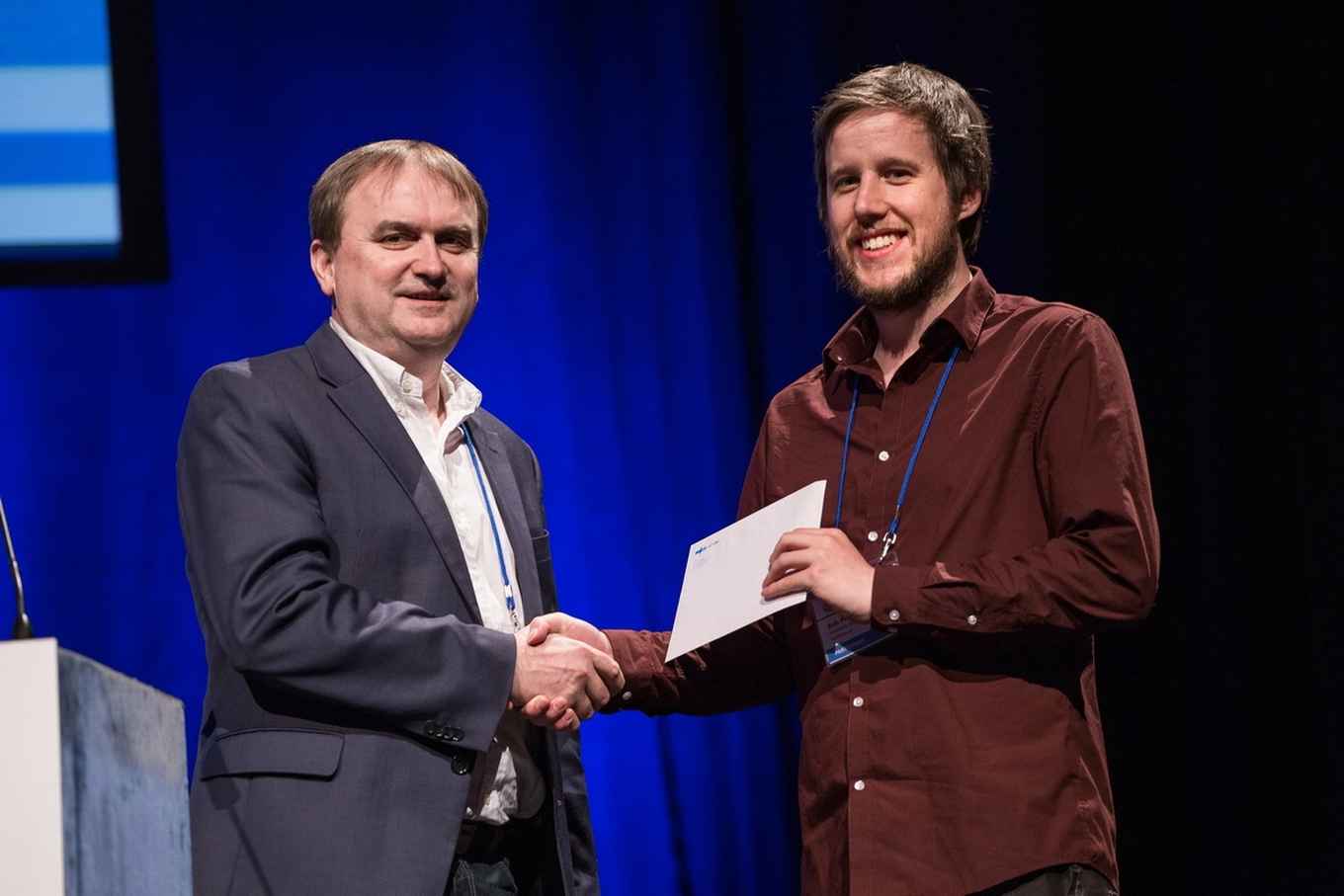Bob Pirok wins Csaba Horváth Young Scientist Award 2017
Using the MANIAC method for nanoparticle analysis
27 June 2017

Pirok outcompeted nine other finalists with his lecture on “Extended multi-dimensional liquid-chromatography systems for comprehensive analysis of complex polymeric nanoparticles”. He presented the use of the novel, comprehensive MANIAC analysis method for the characterization of complex nanoparticles. MANIAC, an acronym for Making Analytically Incompatible Approaches Compatible, was developed at HIMS and CASA, the Centre for Analytical Sciences Amsterdam.
Making the incompatible compatible
MANIAC aims to combine completely different and (seemingly) incompatible separation and characterization systems into a single highly efficient and extensively optimized instrument. It encompasses the integration of various chemical, physical and microbial processes with (multi-dimensional) separation systems. At HPLC2017, Bob Pirok discussed its application in the field of complex polymeric nanoparticles that are, for example, encountered in various coatings (decorative, antireflective and anti-microbial), and drug delivery systems.

Samples containing nanoparticles feature a multitude of parameters, such as particle-size distribution, surface composition, molecular weight and chemical composition. A successful technique for the separation of such complex mixtures is comprehensive two-dimensional liquid chromatography (LC×LC). In LC×LC, a modulator is used to couple the two separation dimensions with different time scales (spanning about two orders of magnitude). The potential of modulators can be further enhanced by allowing fast, controlled chemical reactions to take place.
Proof of principle
Pirok and co-workers first use hydrodynamic chromatography (HDC) to separate the nanoparticles based on size. Next, the modulator is used to dissolve the nanoparticles, yielding a homogeneous molecular solution for each separated fraction. The molecules are then separated in the second dimension based on their chemical composition, by liquid chromatography (LC) or two-dimensional liquid chromatography (LC×LC), in combination with MS detection when appropriate.

A successful application of the complex interplay of the above-mentioned techniques faces a number of challenges (including solvent and sample incompatibility between the two dimensions). As Pirok demonstrated, these can be overcome by applying the MANIAC approach. He presented proof-of-principle with the analysis of polystyrene and PMMA nanoparticle samples.
About MANIAC
The MANIAC project is part of the Technology Area “Comprehensive Analytical Science and Technology” (COAST), a public-private partnership of the Netherlands Organisation for Scientific Research NWO with industrial partners. Prof. Peter Schoenmakers (UvA-HIMS) is the principal investigator and Prof. Ron Peters (DSM, part-time professor at the UvA) acts as MANIAC project manager.
Other academic institutions involved are Radboud University (Prof. Arno Kentgens), VU University Amsterdam (Prof. Govert Somsen) and the University of Groningen (Prof. Elisabeth Verpoorte). Private partners are Heineken, Shell, DSM en Micronit Microfluidics. The total project budget is 1,065,000 euro.
